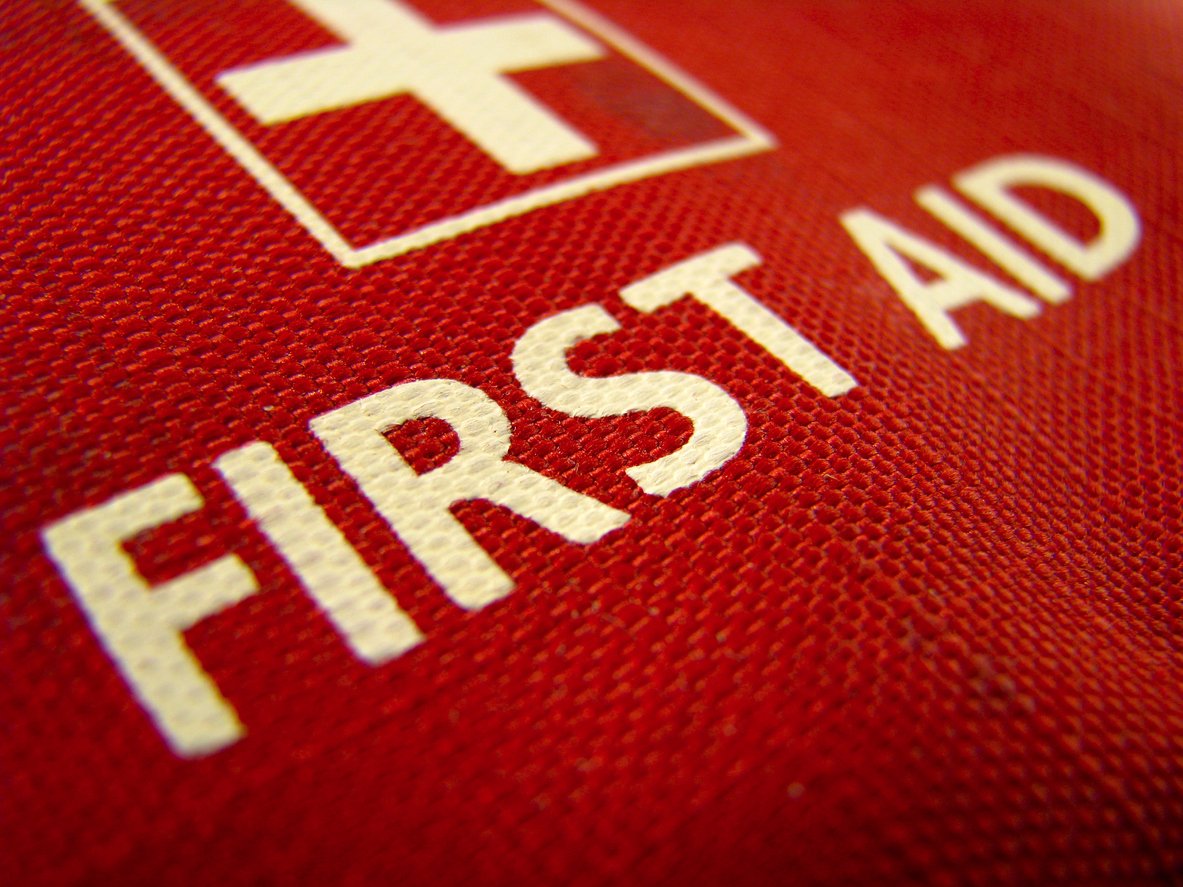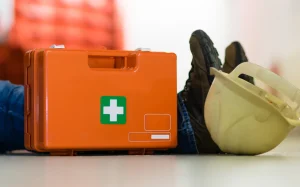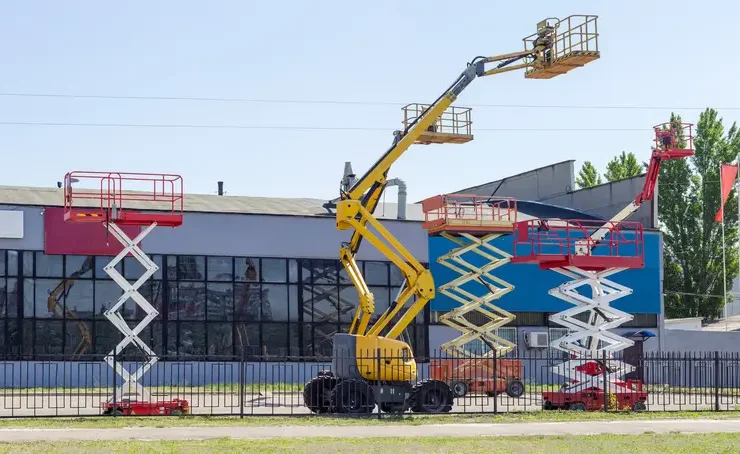First-aid is the essential part of saving someone’s life. We all experience accidents either at home, on roads, Jobsite, etc. Injuries can be fatal or minor, but all of them require an immediate response. Accidents can happen, it is not associated with the type of job. But in the construction business, the ratio of accidents increased due to the machines and nature of work.
[ooc_adblock_1]
A protection plan can not work for more than one Jobsite. That is why each company forms policies according to their work. These programs do not reduce the seriousness of work damages. But it helps out in the treatment of employees before help arrives. The notable thing is creating policies for first-aid. In these policies company’s should frame regulations for saving lives at the Jobsite with OSHA standards.
WHAT IS FIRST-AIDS?
It is the first and fast life-saving technique for minor and severe injuries. It helps in reducing the wound and recovering the patient’s condition. First-aid use for both reasons minor injuries and life-saving injuries. Before the arrival of professional help, its key aim is to keep patients alive and conscious. Usually, a first-aid responder is someone with basic medical emergency training.
FIRST-AIDS AND CONSTRUCTION SITES:
At the construction site, anything can make us fatally harm. Many people get injured at the site but lack first-aid they lost their life. The first-aid responder should have the expertise to deal with electrical burns, bleeding, crushing injuries, falling, chemical burns, and more.
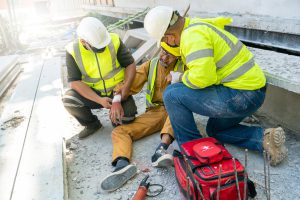
OSHA FIRST-AID STANDARD:
Each place has its standard of first-aid associated with the job hazards. OSHA, a government body, is responsible for the health and safety of workers. OSHA believes to have a safe workplace, which is not possible, and because that OSHA recommended first-aid. The employer has to keep a first-aid responder and equipment at the workplace.
We can find OSHA’s regulations in there, CFR 1926.50 – Medical services and first aid. OSHA eagerly focuses on employers’ responsibility in medical emergencies and provides a list of first aid kits.
FIRST-AID KITS:
Most of the construction sites follow the OSHA’s standards, and they also follow the list provided in CFR 1910.266 App A. It is vital to access the first-aid kit easily.
1. Gauze pads (at least 4 x 4 inches).
2. Two large gauze pads (at least 8 x 10 inches).
3. Box adhesive bandages (band-aids).
4. One package gauze roller bandage at least 2 inches wide.
5. Two triangular bandages.
6. Wound cleaning agent such as sealed moistened towelettes.
7. Scissors.
8. At least one blanket.
9. Tweezers.
10. Adhesive tape.
11. Latex gloves.
12. Resuscitation equipment such as resuscitation bag, airway, or
pocket mask.
13. Two elastic wraps.
14. Splint.
15. Directions for requesting emergency assistance.
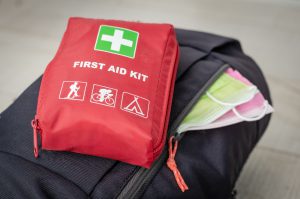
SAFETY PROTOCOLS BY OSHA:
- An employer has to have a first aid responder at the work area and impose and maintain safety measures before the work begins.
- The worksite is at a distant place, where it took time for emergency help to reach. Appoint the first-aid qualifier to treat the injured employees.
- Another essential thing is to keep updated equipment and medicines in the first-aid kits. The employer has to examine the first-aid box every week, and the kit should place in a waterproof container.
- A most crucial part of a medical emergency is to get an ambulance or professional help on time. Either the workplace is in the reach of a 911 emergency or not. Make sure to have sources to reach 911 as soon as possible.
FIRST-AID TRAINING:
Training for first-aid is most meaningful. The notable institutions are American Heart Association, American Red Cross, National Safety Council. Along with them and private organizations are also offering training courses. They offered standard and advanced first-aid courses.
[ooc_adblock_2]
Students receive two certificates at the end of the course after completing the written and practical exam (adult CPR and First-aid). Among many parts of training, the key focus of an instructor is to train students for fast response to first-aid accidents.
Throughout the training, there is a focus on fast reaction to first aid emergencies. Other course elements include primary first aid mediation, basic (CPR), and self-protection cares.
Specific learning topics include shock, bleeding, poisoning, burns, temperature extremes, musculoskeletal injuries, bites and stings, medical emergencies, and confined spaces training. Also included in injury concepts and first aid intervention: Injuries to the head and neck, eyes, nose, mouth, and teeth, chest, abdomen, and hands, fingers, and feet. The course should upgrade according to new hazards and equipment.
EMERGENCY RESPONSES:
It is different when you are a part of an emergency, and your response is everything you can save someone’s life.
- The first thing is the identification of possible hazards at the place of emergency. If you have no idea of more hazards that can happen, check the area, and when you find danger, escape. Also, find injured people and take them with you to safe spots.
- After reaching the scene, call 911 emergency. Collect data that can assist the authorities to send help. Meanwhile, do aid the victims from leaving the damaged area.
- Protect the found victims until the professional team comes. Always check the wounds of injured people, and if they are bleeding, cover them. Find pulse in the unconscious ones and help them to regain it.
How do you have to respond to the injured?
- As the first person, we consent to protect victims as possible. We make sure they are breathing? They have or do not have wounds. Do they need CPR or other emergency help?
- Another important work is to keep victims in stable condition. Assure that they are safe, conscious and their state is not decaying. Calmly, wait for 911, and provide first-aid.
- Provide pain killers to lower down their pains. Although you can not do more than this, after fatal accidents, people lose their senses. You should help them to get back in their mind and comfort them.
In many situations, basic first aid can help prevent a minor issue from worsening. First aid may potentially save a life in the event of a medical emergency. If someone has a severe injury or sickness, they should be followed up on by a medical expert.
